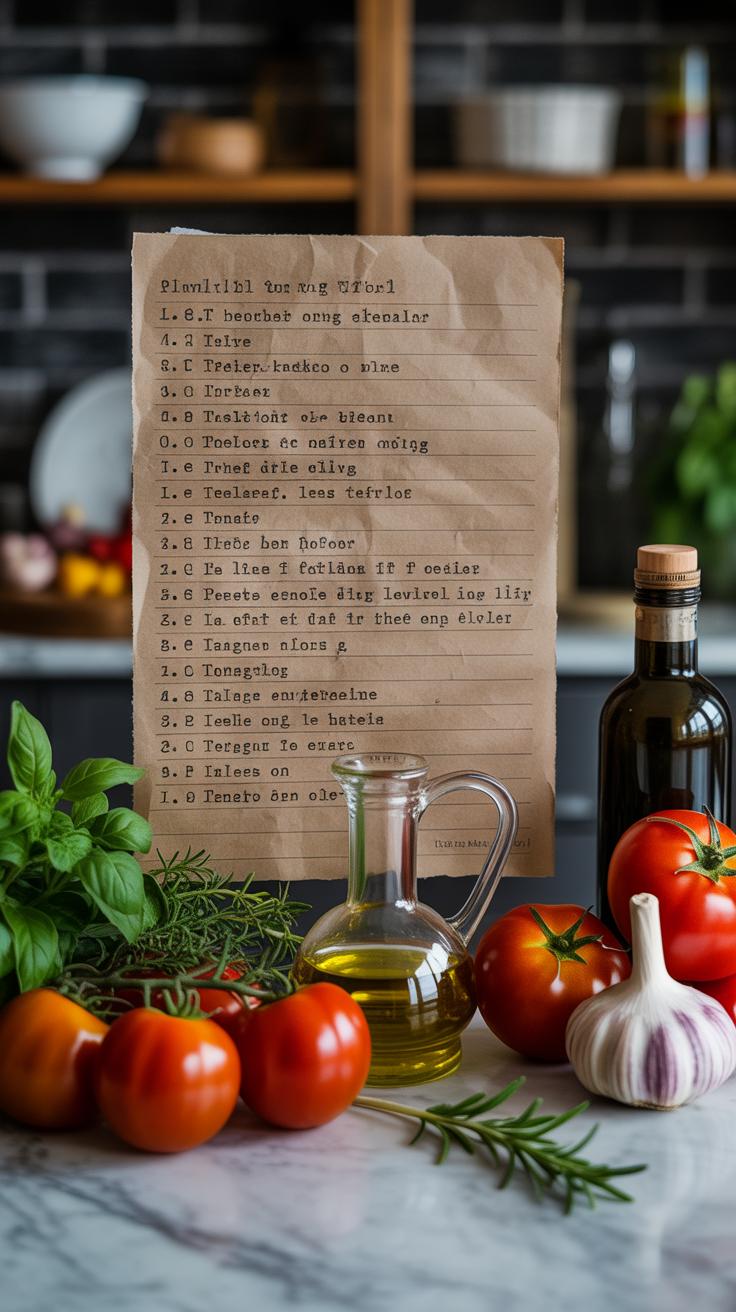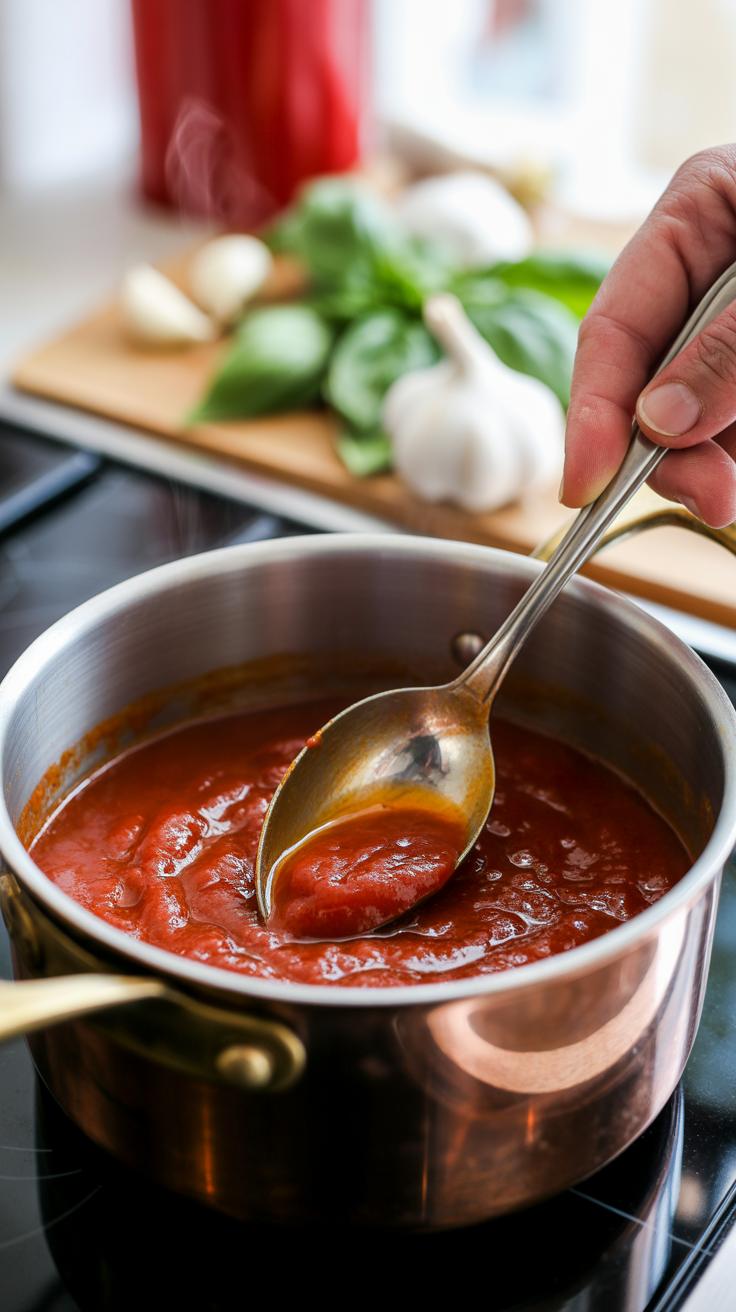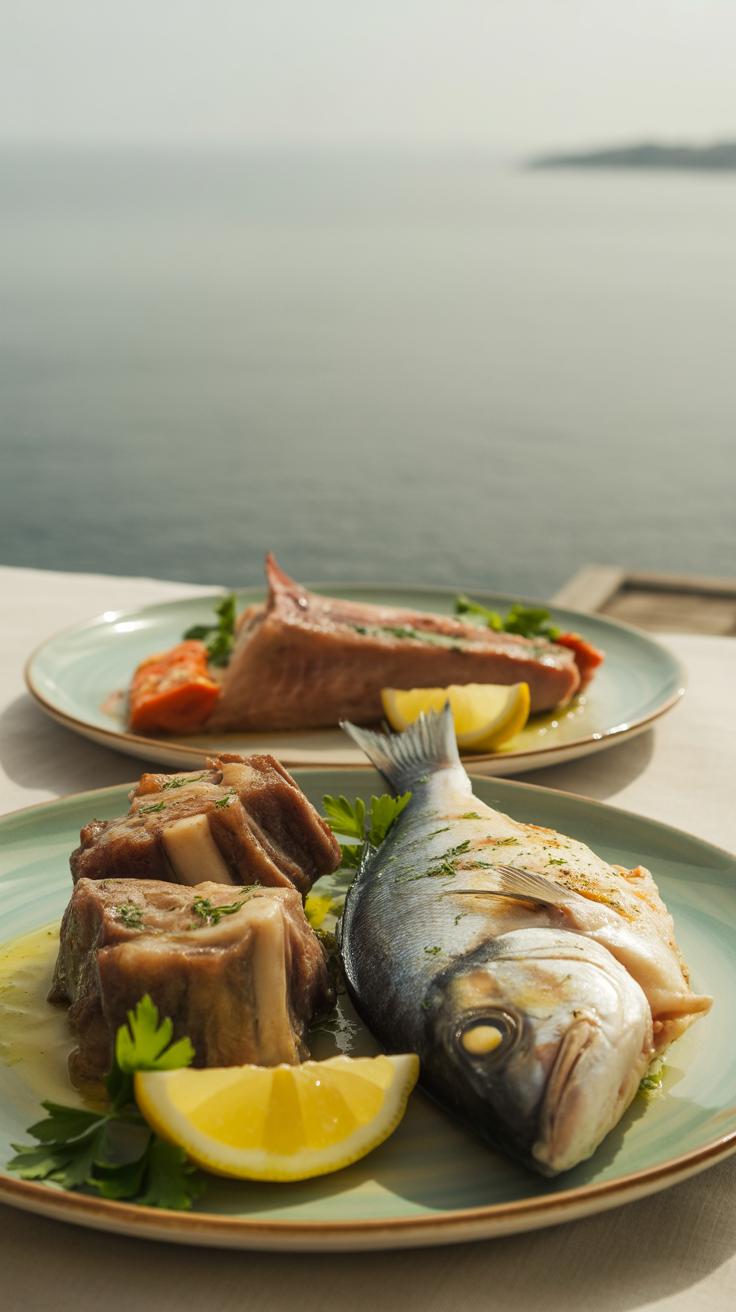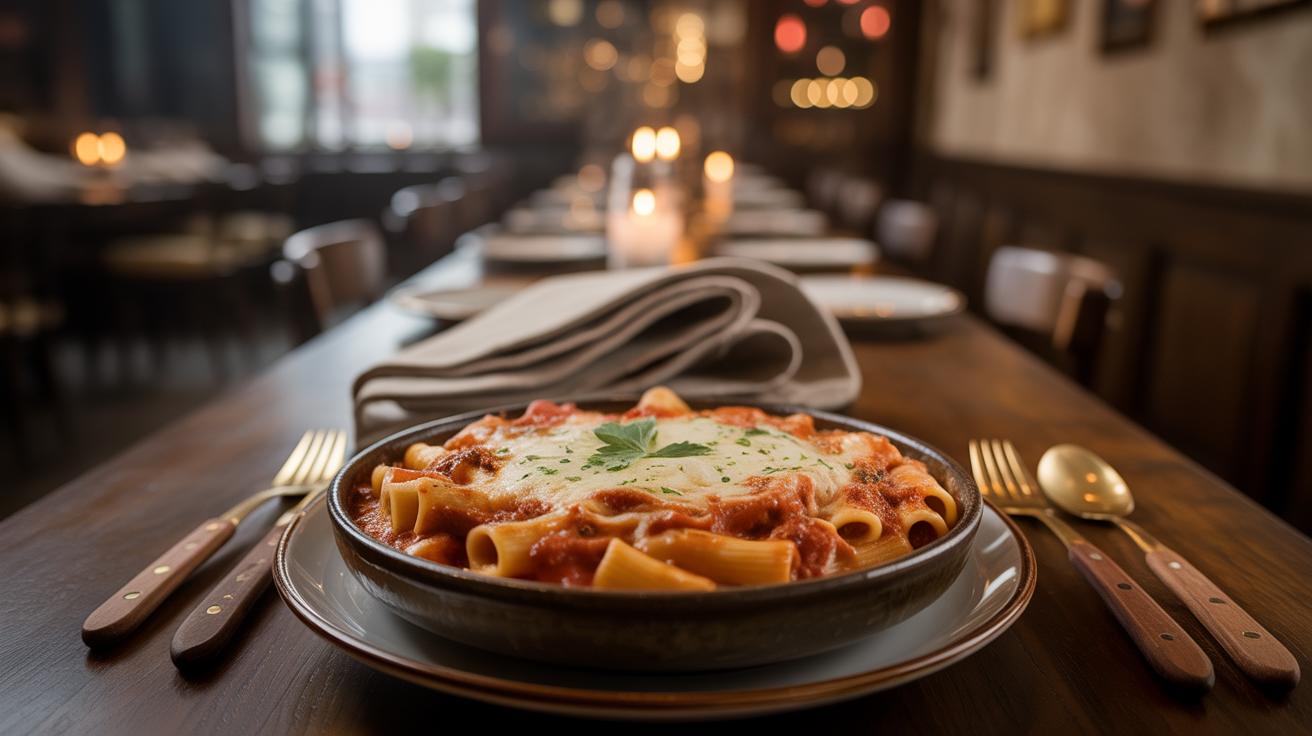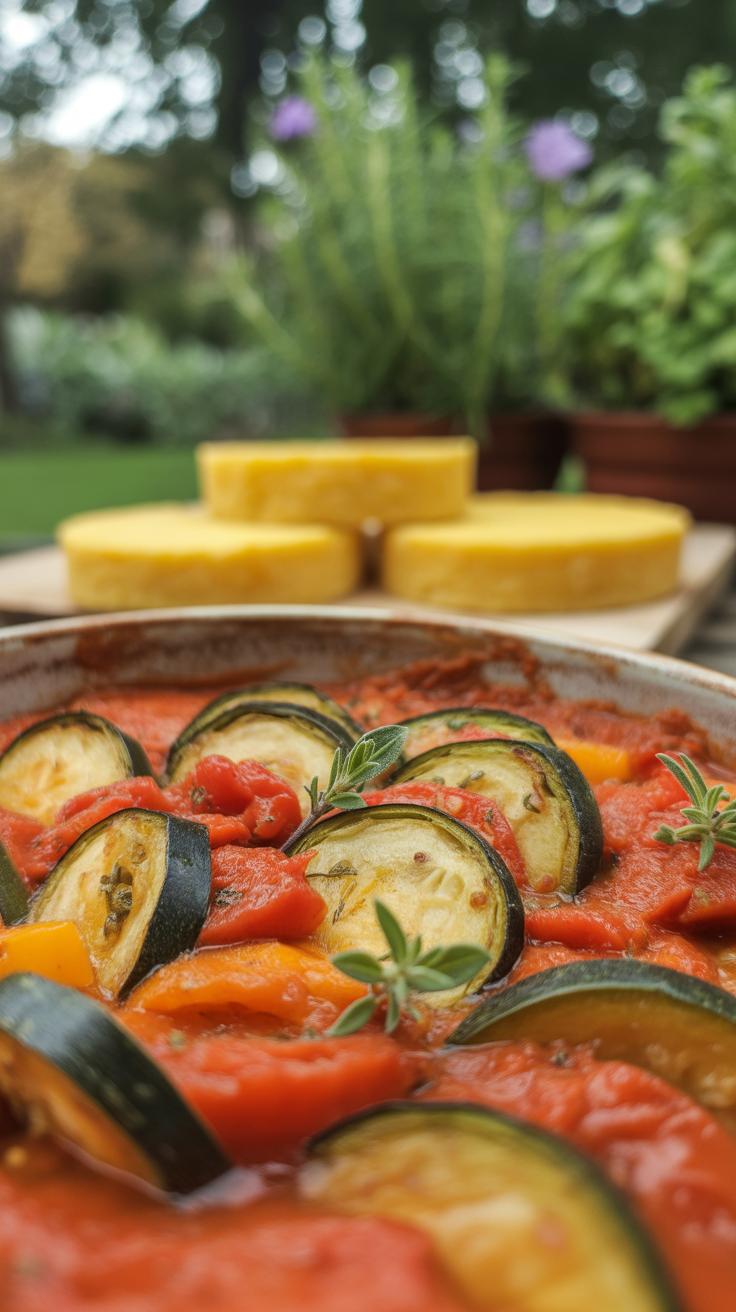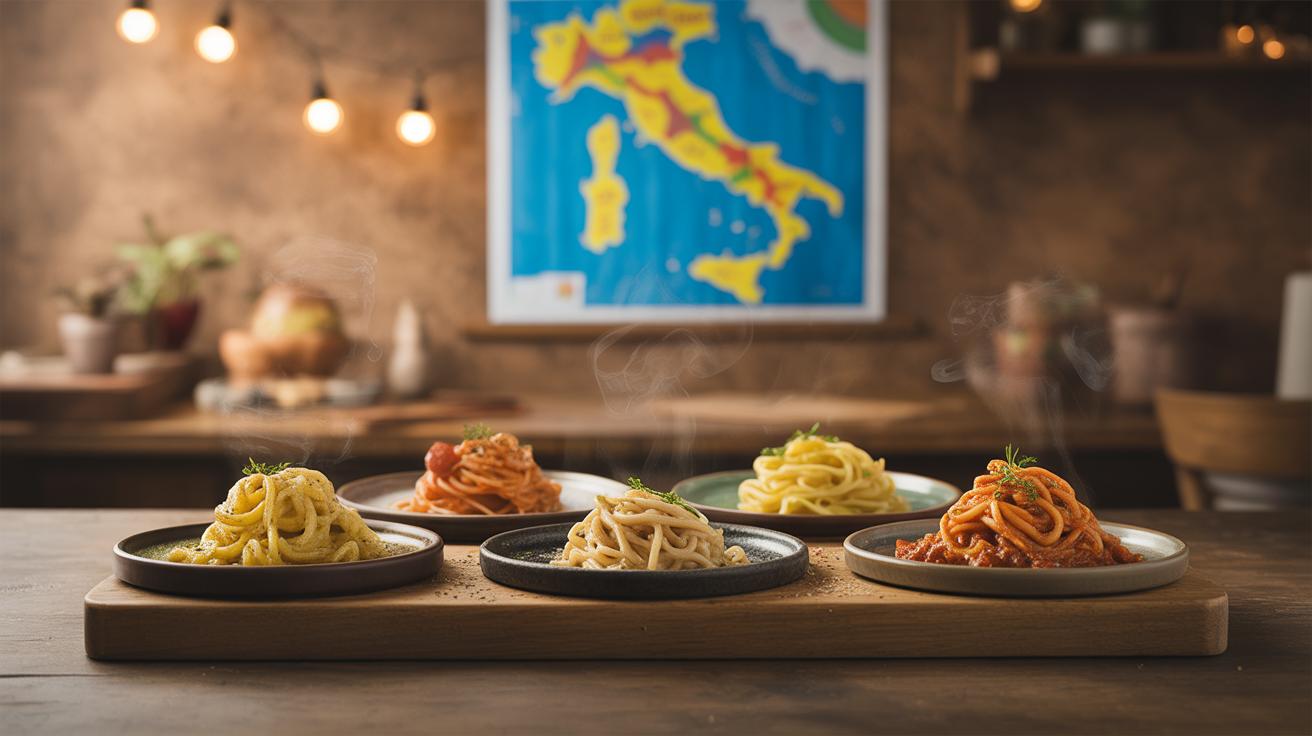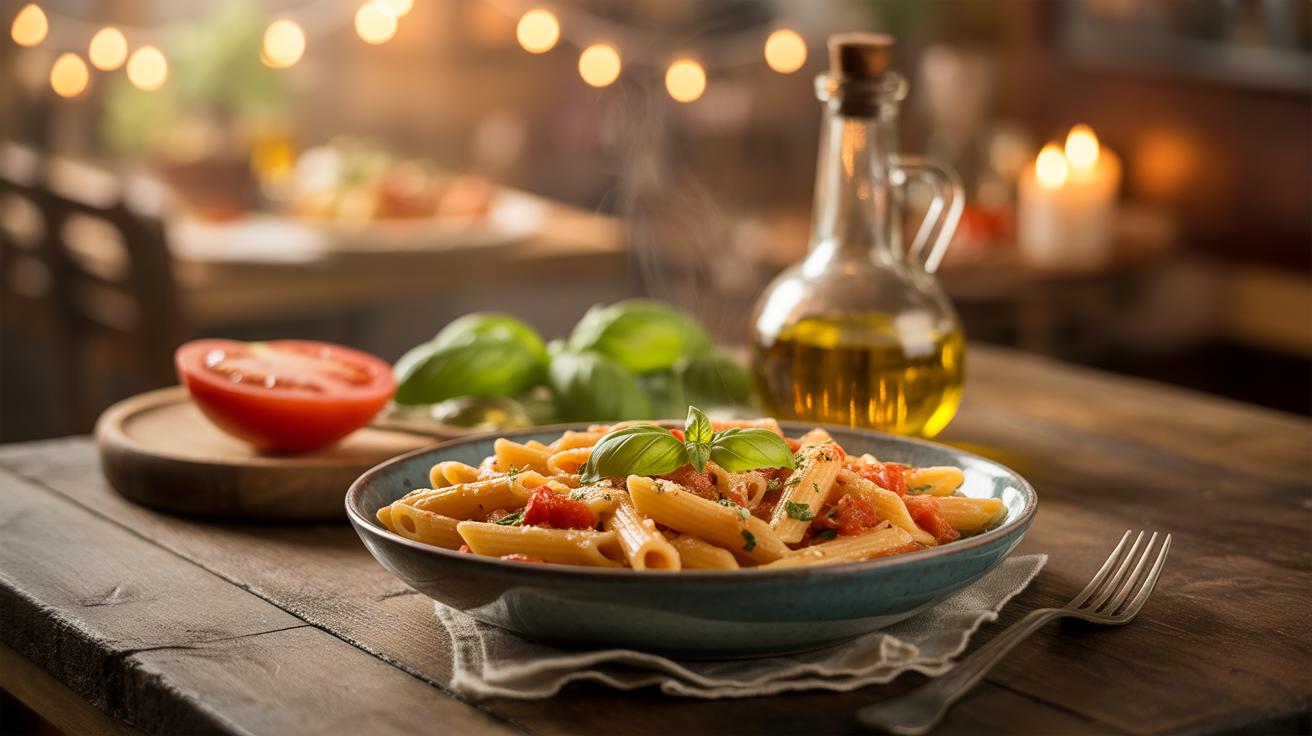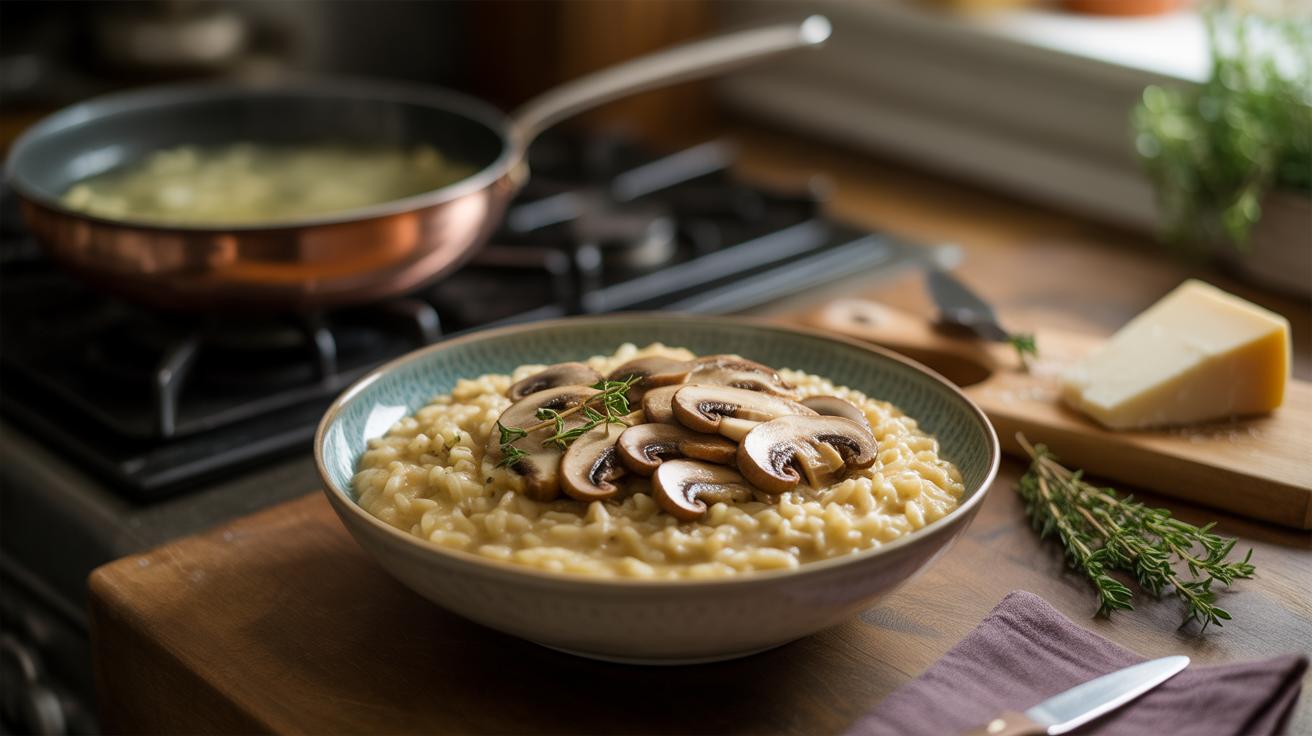Introduction
Italian cuisine stands out worldwide for its rich flavors and simple ingredients. It has grown and changed since ancient times, yet many traditional dishes remain favorites in homes everywhere. Learning how to make these dishes lets you enjoy Italy’s food culture right in your kitchen.
This article will guide you through important Italian dishes to master. You will understand which ingredients to use and how to prepare them. You will also discover key recipes that are both easy and rewarding. By the end, you will have practical knowledge to create authentic Italian meals for your family and friends.
Understanding Italian Ingredients
Fresh and Simple Ingredients
Italian cooking often revolves around a handful of ingredients, but their freshness makes all the difference. Think about ripe tomatoes that are juicy, sweet, but still with a bit of tang. Using canned tomatoes might be easier, but fresh ones give a brightness that feels… alive. Olive oil is another base—extra virgin forms a part of almost every dish. A drizzle brings warmth and depth in a way that other oils don’t. Garlic is straightforward but powerful, sometimes raw and pungent, sometimes softened to mellow sweetness after a gentle sauté. Fresh herbs like basil, oregano, and rosemary aren’t just garnishes. They infuse dishes with fragrance and complexity, often at the last minute, preserving their brightness. Almost every Italian recipe depends on these few building blocks, which shows you don’t need complexities when you have strong foundations.
Choosing Quality Products
When it comes to cheeses, meats, and pasta, the choices can seem overwhelming but trust me, they matter more than you might expect. The cheese you pick isn’t just a topping—it changes the character of a dish. Pecorino Romano brings a salty sharpness, Parmesan adds nuttiness, and mozzarella’s freshness balances richer flavors. For meats, prosciutto di Parma is delicate and sweet, quite different from spicier salamis or hearty pancetta. Selecting the right pasta shape isn’t just tradition; it affects how sauces cling and how the dish feels when you eat it. For example, ragù calls for wider noodles like pappardelle, while seafood pairs well with linguine. Sometimes, I find it tricky to pick the best pasta from a vast array, but experimenting pays off. The quality and type of these ingredients directly influence how authentic and memorable your dish will be—so don’t hesitate to spend a bit more or seek local or specialty stores when you can.
Essential Italian Cooking Tools
When you start preparing traditional Italian dishes, the right tools make a noticeable difference. It’s not just about having a full kitchen but having items that fit the specific techniques and textures Italy’s recipes demand.
Basic Kitchen Equipment
Some essentials are obvious: a good set of pots and pans is your foundation. A heavy-bottomed pot for boiling pasta helps keep temperatures steady, which is surprisingly important. A wide, sturdy pan—like a non-stick skillet or a sauté pan—offers control when tossing vegetables or meats. Sharp knives are critical here, especially a chef’s knife and a paring knife. You want precision when cutting tomatoes or mincing garlic, nothing clunky or dull. And pasta makers—they’re more common than you’d expect. Rolling fresh pasta by hand is traditional, sure, but a pasta machine speeds things up and gives consistent thickness. It might feel unnecessary initially, but it really improves results over time.
Specialized Items
There’s also some gear that Italian cooking almost demands. A pizza stone, for example, is great if you’re aiming for that crisp crust in your pizza. Oven heat distributes better, and the texture changes dramatically. A grater made for Parmesan cheese is another tool you can’t skip. The hole size affects how the cheese melts and blends into your sauce or risotto, so don’t settle for just any grater. Then there’s the mortar and pestle—simple, humble, but essential for making authentic pesto. You can use a blender to speed things up, but the gritty texture and oil release that mortar and pestle coax out feel special. Using it might take a bit of muscle, but it’s worth it for the flavor payoff.
Do you already own some of these? Or maybe you find some curious additions? The right tools don’t just store away—they become part of your routine, shaping how dishes turn out and how much you actually enjoy cooking them.
Making Perfect Italian Pasta Dishes
Cooking Pasta Correctly
Getting pasta just right is, well, trickier than it seems. You want it cooked “al dente,” which means a firm bite without being chewy. To do this, use plenty of boiling water—think a large pot, fully salted like the sea. Salt isn’t just for flavor; it actually helps the pasta cook evenly. Timing plays the starring role here. Overcook by even a minute, and your pasta loses that appealing texture. But don’t obsess either—perfect timing can vary depending on your stove, the pasta type, or even the brand.
One little trick I learned is to taste the pasta early and often during cooking. Start checking about two minutes before the package’s suggested time. That way, you catch the pasta just before it crosses into mushy territory. After draining, toss it quickly with a bit of olive oil or sauce to keep it from sticking. Simple, but effective.
Classic Pasta Recipes
Let’s talk about two dishes that tend to make everyone pause—spaghetti carbonara and lasagna. Both are nice examples of how few ingredients can become something memorable.
For carbonara, you’ll need pancetta, eggs, Pecorino Romano, and black pepper. It sounds straightforward, and it is, but the trick lies in timing and temperature. The pasta must be hot enough to cook the eggs gently, but not so hot that it scrambles them. Toss everything quickly off the heat, and you get a creamy sauce without cream. Sounds odd but works surprisingly well.
Lasagna is more forgiving but requires layering patience. Alternate sheets of pasta with a mix of béchamel sauce, ragù, and cheese. Let it bake long enough for the flavors to marry and the top to brown just right. It’s the kind of dish that rewards a slow afternoon, and maybe a glass of wine while you wait.
These recipes seem simple but demand attention. Cooking pasta is not just about following a recipe—it’s about feel, observation, and that small hunch that tells you when it’s ready.
Preparing Italian Sauces with Confidence
Tomato-Based Sauces
Marinara sauce is a simple yet classic tomato sauce that forms the base for many Italian dishes. Start by gently sautéing garlic in good olive oil until fragrant—don’t let it brown. Add crushed San Marzano tomatoes, a pinch of salt, and maybe a bit of fresh basil or oregano. Let it simmer slowly for at least 30 minutes, enough to develop a fresh but slightly sweet flavor. You’ll notice the sauce thickens, and those simple ingredients transform into something far richer than the sum of their parts. Marinara pairs well with spaghetti, but try it braising chicken or swimming over fried eggplant—you might find its uses more varied than you thought.
Bolognese, on the other hand, demands patience. Begin with finely chopped onions, carrots, and celery, sweating them in butter and oil. Brown ground beef and pork separately, then combine everything with a touch of tomato paste, a splash of milk, and a careful pour of red wine. Let it simmer for hours—yes, hours—on low heat to coax out deep, layered flavors. This sauce prefers hearty pasta shapes like tagliatelle or pappardelle, which hold the meat well. You could, if you want, use it for lasagna, but Bolognese really shines when slow-cooked; it’s a bit of a commitment but worth every minute.
Creamy and Pesto Sauces
Alfredo sauce is rich and straightforward: butter, heavy cream, and plenty of grated Parmesan brought together over gentle heat until silky. The trick is not to overheat or let it separate. Alfredo works beautifully with fettuccine, but don’t hesitate to try it with roasted vegetables or chicken. Sometimes I find it heavy, so balancing with a lemony salad on the side feels right. It’s comforting, but maybe not for every day.
Pesto comes from fresh basil, pine nuts, garlic, Parmesan, and olive oil, all blitzed into a herbaceous, vibrant sauce. The fresh, uncooked nature of pesto means it keeps bright flavors that contrast with heavier pasta dishes. It’s ideal on trofie or trenette pasta and great spread on toasted bread too. You might wonder if it blends well with meat, but it can add an unexpected freshness to grilled chicken or fish when used sparingly.
These sauces, differing so much in preparation and taste, offer a reliable toolkit for exploring Italian cooking. With some experimentation, you’ll find which fits your mood or occasion—marinara for something light, Bolognese for slow Sunday dinners, Alfredo when indulgence calls, and pesto for fresh bursts of flavor.
Exploring Italian Meat and Fish Plates
Popular Meat Dishes
Osso Buco is perhaps one of the most iconic Italian meat dishes you can try at home. Slow-cooked veal shanks braised with white wine, broth, and a mix of vegetables—carrots, celery, and onions—create a deeply flavorful dish. The key is patience; it takes time for the marrow to soften and for the meat to become tender enough to pull apart. You don’t need fancy equipment—just a heavy pot and a low flame.
To balance the richness, gremolata—a mix of lemon zest, garlic, and parsley—adds freshness. I’ve found that adding a little saffron can tease out unexpected warmth, but that’s a personal twist. If you want to simplify, you can skip the gremolata, but the overall experience changes, and you might miss that bright contrast. Osso Buco pairs well with creamy polenta or risotto, which soak up the sauce beautifully.
Seafood Delights
When it comes to fish, grilled sea bass is straightforward but rewarding. A whole sea bass, simply scored and rubbed with olive oil, salt, pepper, and perhaps some rosemary or lemon slices tucked inside, is enough. Cooking over medium heat until the skin crisps and the flesh flakes easily takes about 10–15 minutes. It’s a dish that feels fresh yet honest.
Seafood pasta offers more possibilities and moods. You can toss clams, mussels, shrimp, and squid in garlic, olive oil, and white wine. It’s light but layered with flavors, and you control how thick or saucy it gets, which some might find tricky. What I enjoy is how the pasta captures the sea’s essence without overwhelming the delicate seafood. Just pick fresh ingredients, and try not to overcook—the seafood should stay tender, not rubbery.
Vegetables and Sides in Italian Meals
Vegetable dishes and side items play a quiet but essential role in Italian meals. They don’t just fill the plate; they create a balance of flavors and textures that bring harmony to the dining experience. Italians value simplicity in these preparations—clean tastes, fresh ingredients, and techniques that highlight natural flavors without overcomplicating them.
Simple Vegetable Preparations
Think of dishes like caponata, a sweet and tangy mix of eggplants, tomatoes, olives, and capers simmered gently until tender. It’s rich yet light, a flavor profile that seems to catch you off guard because it’s not just a side but a little story on a plate. Or consider sautéed greens—quick to make, usually just garlic, olive oil, and fresh spinach or escarole. These sides are straightforward but offer contrast and brightness, cutting through heavier main courses without drawing too much attention.
Complementing Main Dishes
Pairing these sides with the right main is more art than strict rule. For a rich meat dish, something acidic or bitter like caponata wakes up your palate. For a delicate fish plate, lighter steamed or sautéed greens work best—they don’t overpower but quietly support the main flavors. It’s about balance, yes, but also about texture and even color. Italians know a meal is not just about taste, but about how parts come together on your plate and, frankly, on your mood while eating.
Mastering Italian Breads and Pizza
Traditional Italian Breads: Focaccia and Ciabatta
Baking Italian breads like focaccia and ciabatta at home calls for patience and a touch of intuition. Focaccia, with its flat, dimpled surface, requires a dough that’s soft but not too wet. You want to press the dough gently with your fingers, creating little craters that will hold olive oil and sea salt. Let it rise slowly—overnight in the fridge works well for a deeper flavor.
Ciabatta is quite different. It’s the loaf with large holes inside, airy but chewy at the same time. The dough is wetter, sticky even, which might feel a bit tricky at first. Handling it carefully and using plenty of flour for shaping is key. Many find that folding the dough several times during fermentation helps develop that unique texture.
Both breads depend on stretching gluten gently and giving the dough time to develop taste naturally. It’s less about rushing and more about knowing when it feels right—sometimes you have to trust your gut rather than the clock.
Crafting Classic Italian Pizza Dough and Toppings
Making pizza dough starts with just four ingredients: flour, water, yeast, and salt. But how you mix and handle them can change everything. Italians often prefer a long, slow rise to develop flavor and chewiness, sometimes letting the dough ferment for 24 hours or more. This delay also improves digestibility, which is a nice bonus.
When shaping the dough, avoid the rolling pin if you want an airy crust—stretch by hand instead. It feels timeless, though honestly, some days your dough will cooperate better than others. Oven temperature matters too. A scorchingly hot oven, like one hitting 500°F or more, will give you that crispy yet tender crust that’s hard to beat at home.
As for toppings, simplicity shines. Classic Margherita requires just fresh tomato sauce, mozzarella, and basil, but you can experiment with prosciutto, mushrooms, or even anchovies if you’re feeling adventurous. Remember, the toppings should complement, not overwhelm. It’s all about balance, though finding that balance might take a few tries.
Creating Italian Desserts
Italian desserts carry a quiet charm that can make any meal feel a bit more complete. You might think they’re complicated, but many are surprisingly approachable for your kitchen experiments. Favorites like tiramisu and gelato are often the first to come to mind, but there’s more to explore beyond just those two.
Tiramisu, for example, isn’t just coffee-soaked ladyfingers and creamy layers—it’s about balancing delicate textures with simple ingredients. To make a decent tiramisu, you’ll need mascarpone, espresso, eggs, sugar, and cocoa powder. The steps are mostly about patient layering and gentle folding, so don’t rush. And gelato? It’s richer and denser than ice cream. You can make a basic gelato at home with milk, sugar, and your favorite flavoring—vanilla, chocolate, or fruit. A blender and freezer do the bulk of the work, no ice cream maker absolutely necessary if you don’t have one.
Regional flavors shape many Italian sweets in ways you might not realize at first. Take mascarpone—that creamy cheese from Lombardy—it’s the backbone of many northern desserts. Then almonds appear in Sicilian pastries, giving a distinct nutty note unique to that island’s tradition. These ingredients carry more than taste; they carry stories and local pride. When you bake or chill these desserts, you’re tapping into a small piece of Italy’s varied food heritage.
Have you tried adding a little almond extract or crushed nuts to your tiramisu? It’s subtle but shifts the whole flavor profile. The best part is, playing around with these ingredients lets you make recipes your own while still honoring their roots. What would happen if you experimented with gelato bases from different regions? It’s worth a test or two.
Pairing Italian Wines and Beverages
Wine Choices
Choosing the right Italian wine to go with your meal can be surprisingly rewarding. Italy has a vast range of wines, each tied closely to regional dishes, so pairing them thoughtfully can enhance your dining experience.
For example:
- Chianti: A classic red from Tuscany, with its bright acidity and moderate tannins, pairs well with tomato-based pasta dishes like spaghetti alla Bolognese or a simple pizza Margherita.
- Barolo: Known as the “king of wines,” this powerful red works great with rich meat dishes such as osso buco or hearty stews. It’s complex, so give it time to breathe.
- Pinot Grigio: A crisp white that’s perfect for lighter fare—think seafood pasta or a fresh Caprese salad. It balances well with subtle flavors without overpowering them.
- Prosecco: Often served as an aperitif, its sparkling bubbles can awaken the palate before a meal, though it also pairs nicely with appetizers like fried appetizers or light cheeses.
Still, pairing isn’t always straightforward. Sometimes a surprising combo lights up the palate more than the “traditional” matchups. Don’t be afraid to experiment. What’s your take on red wine with seafood? Personally, I’ve been surprised more than once.
Other Italian Drinks
Wine may dominate, but there are other Italian drinks that are integral to the meal. Espresso, for instance, is almost a ritual in itself, often enjoyed after dinner rather than during. It cleanses the palate and sharpens the senses, setting a perfect tone for conversation or quiet reflection.
Then there are liqueurs like Limoncello and Amaro. Limoncello, usually sipped chilled, refreshes after heavy meals and is a bright contrast to richer dessert flavors. Amaro, with its herbal bitterness, aids digestion—though some prefer it neat, others use it creatively in cocktails.
If you’re looking to complete your Italian dinner authentically, consider offering a choice between espresso and a digestivo. It’s this small gesture that can make your meal feel more complete, almost like a little celebration at your dining table.
Tips for Cooking Italian Food at Home
When you dive into cooking Italian dishes at home, a little planning goes a long way. Start by assembling fresh ingredients—think good olive oil, ripe tomatoes, quality cheeses, and fresh herbs. Sometimes, hunting down authentic items takes effort, but it really makes a difference. Try not to rush; prepping mise en place helps keep everything on track.
Break down recipes into manageable steps. For example, if you’re making lasagna, prepare the sauce a day ahead—it deepens flavors and saves time later. Don’t be afraid to experiment with timing a bit; some dishes improve with a short rest before serving.
Serving Italian food is as much about the mood as the meal. Simple plating works better than fuss—let the colors of basil, tomato, and Parmesan shine. Sharing food family-style invites conversation and a relaxed vibe. Maybe light a candle or pour a glass of wine to make the experience more welcoming.
Have you noticed how meals stretch out when enjoyed with others? Don’t rush. Sometimes, getting a little messy or talking through a recipe’s odd parts adds to the charm. Cooking Italian food isn’t just about the end result—it’s about the moments around the table, too.
Conclusions
Cooking traditional Italian dishes brings a taste of Italy into your home. These dishes rely on fresh, high-quality ingredients and simple techniques. Once you learn them, you can enjoy meals that connect you to Italian culture and history.
Mastering these recipes not only fills your kitchen with wonderful smells but also gives you confidence to try more. Keep exploring Italian cuisine and you will find it both enjoyable and satisfying. Your cooking will improve with each dish you prepare, offering delicious rewards.


